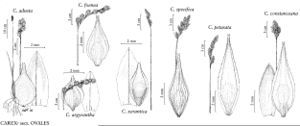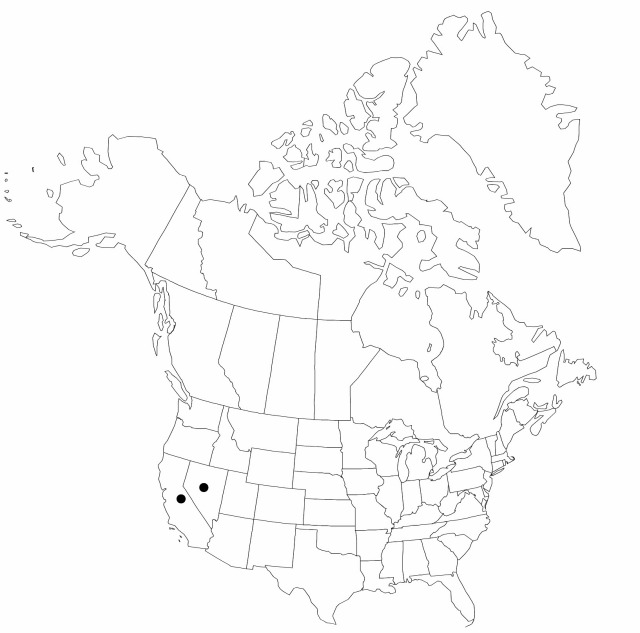Carex specifica
Mem. Torrey Bot. Club 1: 21. 1889.
Plants densely cespitose. Culms 50–85 cm. Leaves: sheaths often green-veined, white-hyaline at least 10 mm below summit, ± firm, summits U-shaped or rounded, prolonged to 4 mm beyond collar; distal ligules 1–4 mm; blades 3–6 per fertile culm, flat or folded, 14–50 cm × (2.3–) 3–5 mm. Inflorescences usually dense, greenish or gold, usually oblong, 1.9–5 cm × 12–19 mm; proximal internode 2.5–5 (–7) mm; 2d internode 2–5.5 mm; proximal bracts scalelike or bristlelike, shorter than inflorescences. Spikes 5–14, aggregated or proximal 1 more distant, narrowly to broadly ovoid, 9–18 × 6–9 (–11) mm, base rounded to attenuate, apex truncate to tapered. Pistillate scales green to gold or redbrown, with pale midstripe, lanceolate to ovate, (3.9–) 4.3–5.2 mm, shorter than or ± equaling and narrower than perigynia, margin white, 0–0.5 mm wide, apex acute to acuminate. Perigynia appressed to ascending, green to straw colored, conspicuously usually 10–18-veined abaxially, conspicuously 4–10-veined adaxially, at least 3 adaxial veins longer than achene, lanceolate to ovate, planoconvex, 4.9–6.3 (–7) × 1.5–1.8 (–2) mm, 0.5–0.7 mm thick, margin flat, including wing 0.25–0.4 mm wide, ciliate-serrulate at least on distal body; beak gold to redbrown at tip, flat, ± ciliate-serrulate, abaxial suture inconspicuous, distance from beak tip to achene 2.7–4.2 mm. Achenes elliptic to obovate, 1.6–2 (–2.3) × 1–1.5 mm, 0.4–0.5 (–0.6) mm thick.
Phenology: Fruiting summer.
Habitat: Dry soils in meadows, open forests
Elevation: 1200–3500 m
Discussion
Perigynia of Carex specifica are sometimes narrowly lanceolate, resembling those of C. petasata in shape, but perigynia of C. specifica are consistently smaller and have smaller achenes.
Selected References
None.
Lower Taxa
"shortened" is not a number."narrower" is not a number."+timesaslongasinflorescences" is not declared as a valid unit of measurement for this property."not undefined" is not a number.

